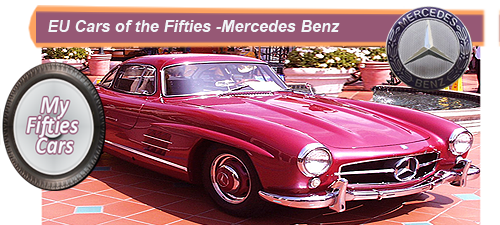 Mercedes Benz, one of Europe'sleading producers of premier sedans and sports saloons, have a history going back as far as the automobile industry itself.
Mercedes Benz, one of Europe'sleading producers of premier sedans and sports saloons, have a history going back as far as the automobile industry itself.
The company’s co-founder, Carl Benz is considered to be the creator of the first ever petrol-powered car, known as the Benz Patent Motorwagen, with its patent registered in January of 1886.
Mercedes-Benz, GermanyAll of the costs of development were met by Benz’s wife and business partner, Bertha, who was as wealthy as she was formidable.
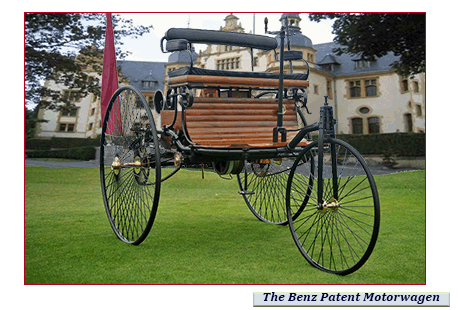 Bertha also firmly believed that the automobile would one day play a significant part in the future.
Bertha also firmly believed that the automobile would one day play a significant part in the future.
Within less than twelve months the patent for another petrol-driven car was registered, also in Germany. This time, the patent request came from Mannheim-based Gottlieb Daimler and engineered Wilhelm Maybach, who was unaware that Benz had upstaged them by almost a year.
Such was the dramatic effect of the registration of these patents in Germany, is that in the opinion of most automobile historians, is that they laid the foundation for road travel as it is today.
Unaware of each other’s existence, the two companies were busy manufacturing the world’s motor vehicles were situated within reasonable proximity to each other.
Benz in Mannheim in the southwest of the country and Daimler in the village of Cannstatt in the outskirts of Stuttgart, a distance of around 135 kilometres, (80 miles).
![]()
In the early days, despite Benz being the first to launch a petrol driven automobile, Daimler was doing better regarding development and sales, mainly due to the support of a far-seeing Austrian businessman by the name of Emil Jellinek.
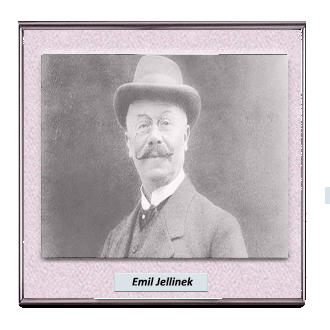 Jellinek has his curiosity so aroused when he heard tales of these new horseless carriages being developed that he made the formidable 670 kilometres ( 400 miles) journey to Cannstatt to visit the Daimler factory.
Jellinek has his curiosity so aroused when he heard tales of these new horseless carriages being developed that he made the formidable 670 kilometres ( 400 miles) journey to Cannstatt to visit the Daimler factory.
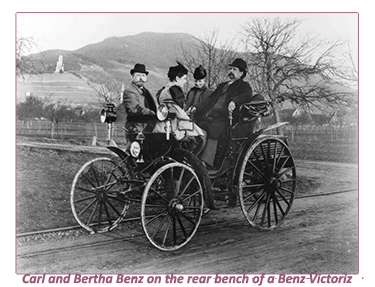 The Viennese financier liked what the company was doing, while, at the same time, striking up a strong rapport with Daimler and Maybach.
The Viennese financier liked what the company was doing, while, at the same time, striking up a strong rapport with Daimler and Maybach.
Before he set off on the long journey home, Jellinek placed an order for his first Daimler car, the earliest version that the company produced, belt-driven and powered by a two-cylinder engine, capable of generating just six horsepower.
When his new toy arrived in Vienna a few months later in late 1897, after the initial excitement wore off, Emil Jellinek began to feel the first tinges of disappointment with his acquisition.
The problem was that the massive vehicle was just too slow, capable of reaching a maximum speed of only 15 miles per hour (24 K/ph.)
![]()
 Unable to come to terms with his dissatisfaction, once again Jellinek set off on the long journey back to Cannstatt. This time, he came equipped with a much better idea of what he expected from Daimler and Maybach- a car that would be capable of reaching speeds of up to 25 miles per hour (40 km/h).
Unable to come to terms with his dissatisfaction, once again Jellinek set off on the long journey back to Cannstatt. This time, he came equipped with a much better idea of what he expected from Daimler and Maybach- a car that would be capable of reaching speeds of up to 25 miles per hour (40 km/h).
By that time Daimler-Maybach was working on a new model, to be called the Phoenix, powered by a four-cylinder engine capable of generating eight horsepower.
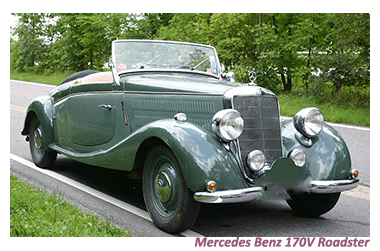 So impressed was Jellinek with the latest developments that he placed an order for not one but two Phoenixes.
So impressed was Jellinek with the latest developments that he placed an order for not one but two Phoenixes.
When the two new cars were delivered, late in 1898, they fulfilled Jellinek’strict criteria, enough to spread the word among his many contacts in the upper echelons of Austro-German society and business worlds on the benefits of owning a Daimler.
Jellinek was reportedly overwhelmed by the positivity of his friends and colleagues reaction, that he rapidly began to sense a business opportunity. Once again the wily Austrian was on his way back to Cannstatt but this time with an exciting proposition.
The proposal was that Jellinek would become a buying agent for Daimler- an arrangement that he would pay for several cars in advance and resell them.
This situation suited Daimler and Maybach ideally, taking care of the worries of how to market their vehicles, which was mostly conducted by word of mouth through Jellinek’s extensive connections .
![]()
The other significant advantage of this arrangement was that all cash flow problems were immediately eradicated freeing up valuable funds for continued research and development.
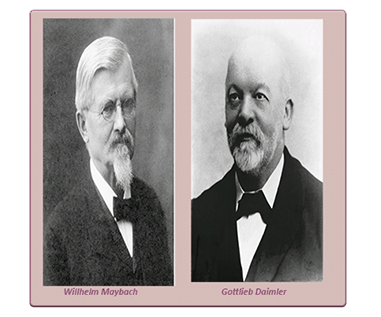 Apart from a short list of technical stipulations, the only other request that Jellinek had of his new business associates is that he be allowed to market the cars that he sold as Daimler-Mercedes, in the name of Mercedes, his daughter.
Apart from a short list of technical stipulations, the only other request that Jellinek had of his new business associates is that he be allowed to market the cars that he sold as Daimler-Mercedes, in the name of Mercedes, his daughter.
Daimler readily agreed with his single counter stipulation being that new Daimler-Mercedes would continue to carry the emblem that he had designed many years previously- a star within a circle.
Ironically this symbol would soon be called on to act as a monument to Gottlieb Daimler who passed away just a few months after the agreement was signed.
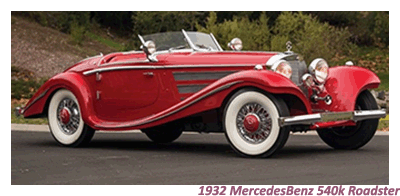 Gottlieb's sons Adolf and Paul, who were already involved in the production side of the plant, stepped in to fill the gap left by their father.
Gottlieb's sons Adolf and Paul, who were already involved in the production side of the plant, stepped in to fill the gap left by their father.
Having overcome that significant setback, just a few years later, the Daimler brothers were faced with another significant test, having to manage without their late father’s partner and soul mate Wilhelm Maybach who decided to leave the company he had helped to establish in search of a fresh challenge.
![]()

At the plant in Mannheim, the Benzes were also making singnificant strides progressing just as well, if not better, than Daimler. The combination of Carl’s engineering skills and Bertha’s entrepreneurial expertise and financial capabilities saw the company being so overwhelmed that the business had to move into larger premises as their production staff increased almost tenfold.
Such was the extent of Benz and Co.’s success that during the last few years of the Nineteenth century, they were rated not only as the first automobile company in the world but almost the largest.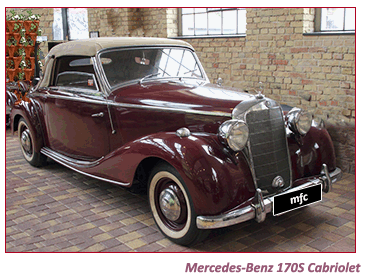 As the demand for new vehicles increased, Carl and Berta Benz realized that there was a market in Germany for less expensive automobiles aimed towards a more middle-class market.
As the demand for new vehicles increased, Carl and Berta Benz realized that there was a market in Germany for less expensive automobiles aimed towards a more middle-class market.
This lead to the introduction of the Victoria, a basic three seater powered by a three horsepower engine, the Victoria proved to be quite a success, selling an average of one hundred units annually, providing the company with another first- the first mass-produced automobile.
At the dawn of the Twentieth century, Daimler–Mercedes, and Benz were among the largest car manufacturers in the World.
Despite their considerable success, there are no historical records that they were even aware of each other’s existence for many years.
It was only when both the companies began to spread their activities across Europe and even into the United States that they discovered that their major rival was just a short car journey away.
 Even then there is no historical indication that there was any form of interaction between the companies other than the usual business pleasantries.
Even then there is no historical indication that there was any form of interaction between the companies other than the usual business pleasantries.
This unusual situation began to change, when in 1914, after a protracted period of political instability in Europe, Germany declared war on the Triple Entente of the British Empire, France, and the Russian Empire.
The stinging defeat that Germany suffered left the company in a very precarious state, with high unemployment causing the country’s already strained economy to reach the point of collapse.
 With the demand for luxury automobiles reaching very close to rock bottom, Karl and Bertha Benz got together with Paul and Adolf Daimler to discuss the possibility of consolidation to ride out the economic downturn.
With the demand for luxury automobiles reaching very close to rock bottom, Karl and Bertha Benz got together with Paul and Adolf Daimler to discuss the possibility of consolidation to ride out the economic downturn.
 The first stage in this new arrangement got underway in 1924, with the two former rivals signing an agreement, where they would dare information relating to design and production, as well as centralising their advertising.
The first stage in this new arrangement got underway in 1924, with the two former rivals signing an agreement, where they would dare information relating to design and production, as well as centralising their advertising.
Daimler and Benz also agree to consolidate their sales force, while marketing their brands.
Within the space of a few months, it became apparent to the Daimlers and the Benzes that this new arrangement was going to be an outstanding success, with cost cut dramatically and sales increasing almost fourfold.
Take me back to the Home Page

